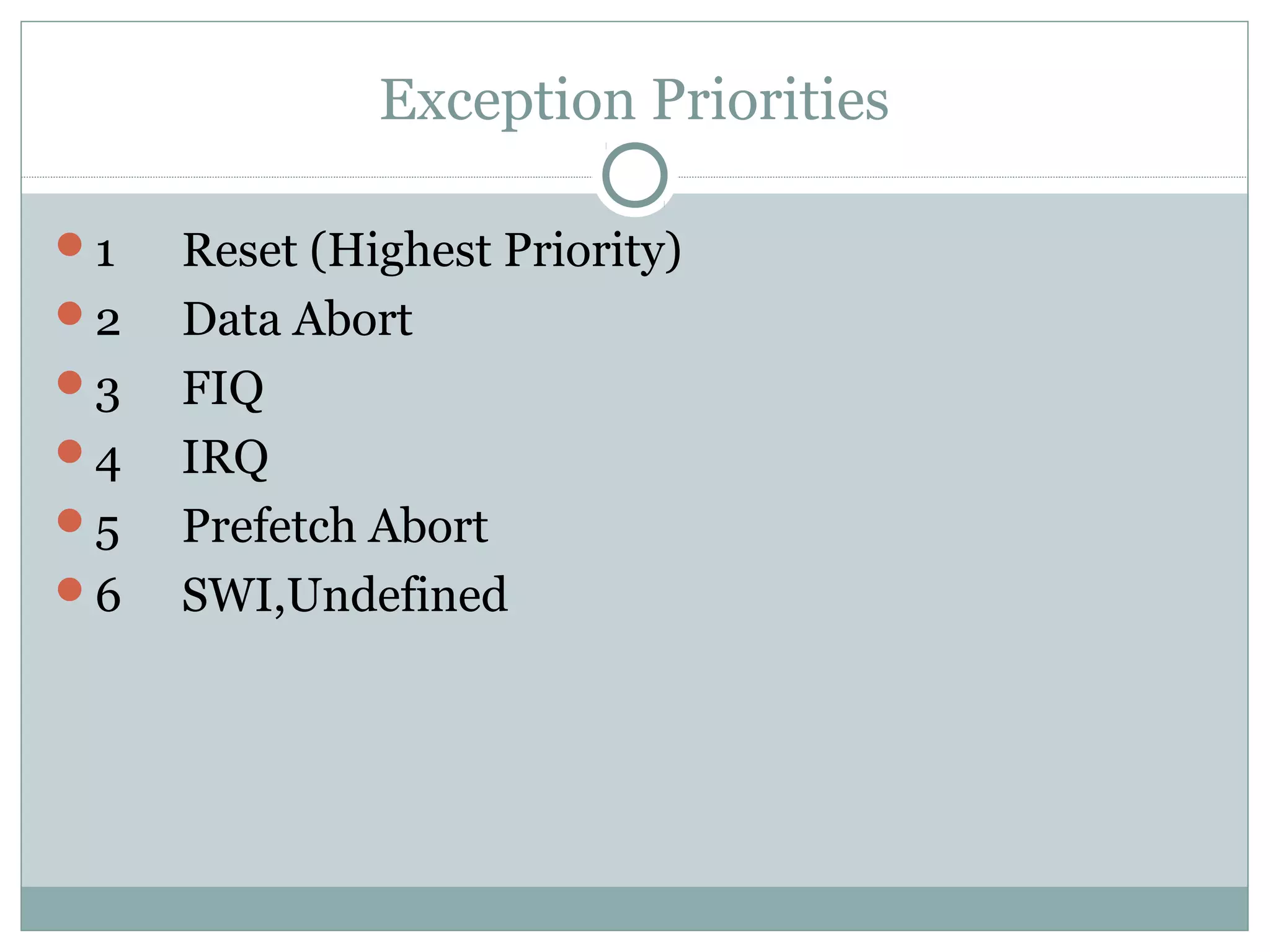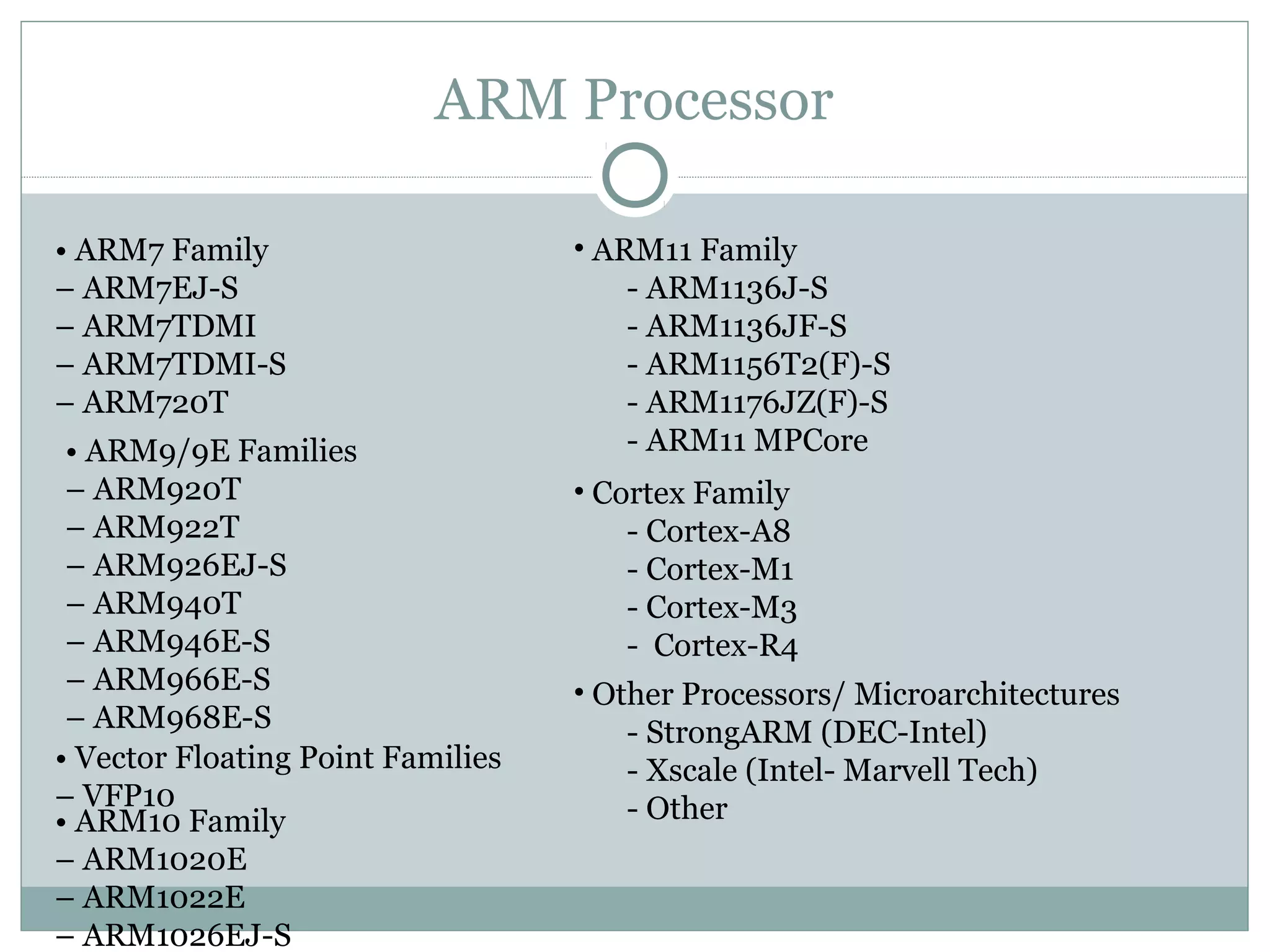The document provides an overview of ARM architecture, detailing its advantages such as low power consumption and high performance in portable devices. It differentiates between RISC and CISC architectures, presents various ARM processor families, and explains key features including instruction sets, pipelining, and operating modes. Additionally, it highlights the evolution of ARM technology and its applications in various devices and systems.




























![Operation Modes
Mode Registers CPSR[4:0]
User User 10000
FIQ _fiq 10001
IRQ _irq 10010
Supervisor Mode _svc 10011
Abort _abt 10111
Undefined
Instruction
_und 11011
System User 11111](https://image.slidesharecdn.com/arm-150816033400-lva1-app6892/75/ARM-Advance-RISC-Machine-29-2048.jpg)







![ARM Processor Families
Naming Convention
ARM[x][y][z][T][D][M][I][E][J][F][S]
X – Family
Y - Memory management /protection
Z – Cache
T - Thumb Mode
D – JTAG Debugging
M – Multiplier
I – Embedded ICE Macrocell
E – Enhanced Instruction (implies TDMI)
J – Jazelle hardware accelerated java
F – Floating point unit
S – Synthesizable Version](https://image.slidesharecdn.com/arm-150816033400-lva1-app6892/75/ARM-Advance-RISC-Machine-37-2048.jpg)










